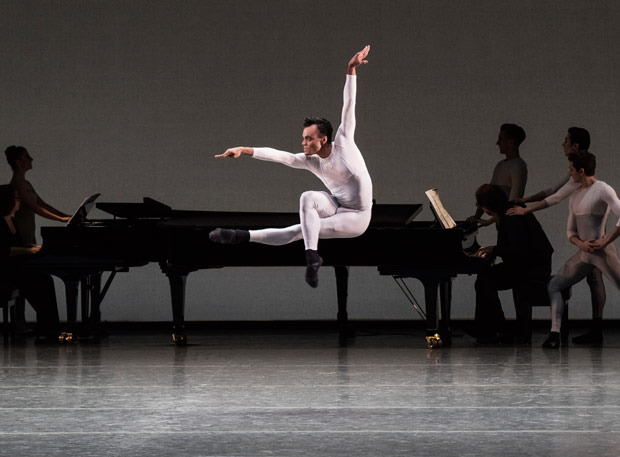
© Paul Kolnik. (Click image for larger version)
New York City Ballet
HERE/NOW Festival – Justin Peck: In Creases, The Dreamers, New Blood, Everywhere We Go
★★★✰✰
New York, David H. Koch Theater
30 April 2017
www.nycballet.com
davidhkochtheater.com
Catch and Release
Justin Peck is the it-boy at New York City Ballet, and it’s not hard to see why. At only 29, he has racked up an impressive number of ballets, particularly if one considers that he made his first work less than a decade ago. This season’s Decalogue, premiering May 12, will be his fourteenth for New York City Ballet, and he has taken on almost as many for other companies. He is a choreographer on the move.

© Paul Kolnik. (Click image for larger version)
Not only is he prolific, but he’s undeniably talented, particularly at moving the corps de ballet in kaleidoscopic, ingenious, surprising ways. And he has developed a clear style: geometric, streamlined, transition-less, and full of contrasts between fast and slow, sharp and legato. And he’s musical; he brings attention to aspects of each score you may never have noticed before.
What his ballets have sometimes lacked is a sense of deeper meaning; they dazzle but seldom move. The all-Peck program served up last week as part of the company’s “Here/Now” festival seemed to underscore this point. In part this was a problem of programming: the first piece, In Creases was his very first for the company, and two (The Dreamers and New Blood) were made for fall fashion galas, a format in which style generally trumps substance. All these ballets are cleverly made and crammed with ideas. But only one, Everywhere We Go, makes a grand statement. This was the one piece on the program set to music by Sufjan Stevens, with whom Peck seems to have a strong affinity. Decalogue, the new work, will also have music by Stevens.

© Paul Kolnik. (Click image for larger version)
Three years after its creation, Everywhere We Go is still the big, sprawling, heart-on-its sleeve manifesto it was when it premiered. Stevens’ music here is uncharacteristically bombastic, driven by soaring melodies, blaring horns, swooping glissandi, and clangorous rhythms. Out of this sonorous world, Peck carves memorable images: two male dancers moving like a man and his shadow; a wedge of bodies, slowly dissolving as it sweeps across the stage; swallow-tailed lifts into the light; figures collapsing and rising again. The latticed, architectural backdrops by Karl Jensen, elegantly illuminated (by Brandon Stirling Baker) so that they become now translucent, now forbidding, are glorious; they fill the vertical space behind the dancers with life. Dancers are always bursting out from the ensemble: Teresa Reichlen, with her soaring, effortless jumps; Tiler Peck, luxuriating in packed run-on phrases; Russell Janzen, pensive and grave as he leaves the crowd behind him; Amar Ramasar, running and spinning and flicking his arms to the beat; Stirling Hyltin, throwing up her arms as she’s tossed into the air. The ballet is really about them – Peck’s colleagues and friends. That feeling of camaraderie, and the inventiveness of the patterning, propel the ballet.
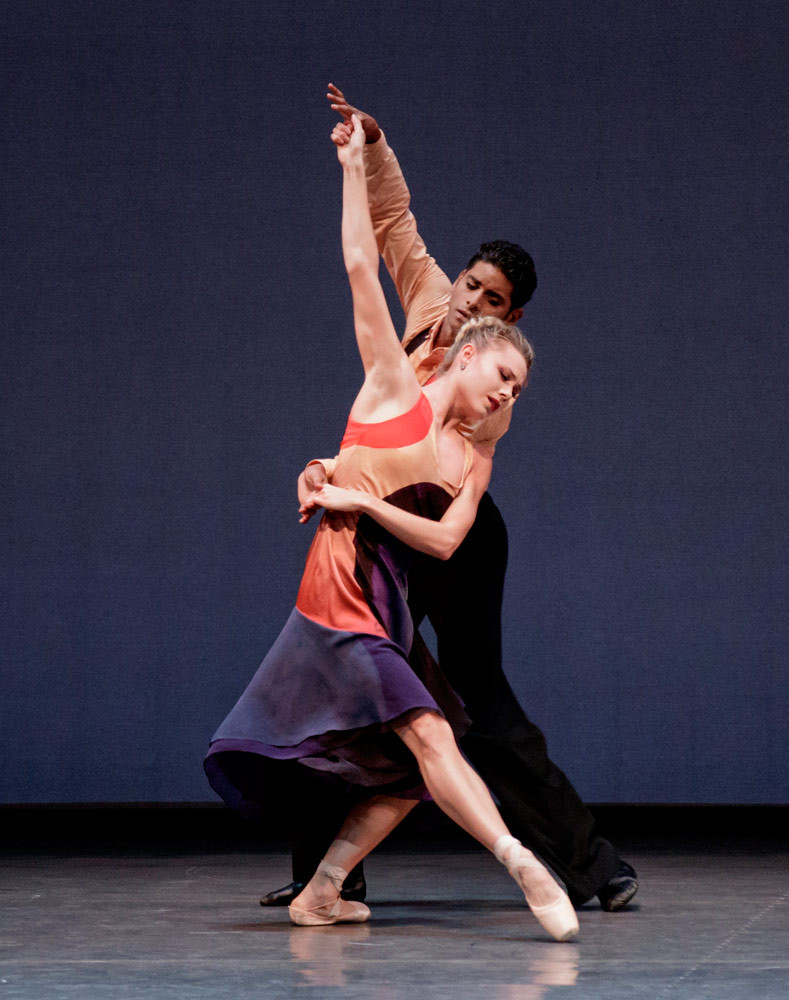
© Paul Kolnik. (Click image for larger version)
In comparison, the other three works on the program feel rather dry. The Dreamers, made for Sara Mearns and Amar Ramasar (with colorful costumes by Dries Van Nooten, most unflattering in Ramasar’s case), is an exploration of the pas de deux, the one area Peck seems least comfortable with. It’s clear that he’s trying to subvert the clichés of partnering and place the ballerina on equal footing with her male counterpart. That’s all to the good. But often the resulting duets feel too much like a to-and-fro, give and take, catch and release. In The Dreamers, Peck tries to add a note of conflict, or sadness, to this back and forth. The dancers walk away from each other, lie down, leave each other, return. The most lasting impression is of Sara Mearns rising slowly on pointe, a motif that returns like a statement, suggesting something, perhaps thought. Still, the pas de deux’s weakness lies in its imprecision. All that comes across is a vague malaise.

© Paul Kolnik. (Click image for larger version)
In Creases and New Blood are both ensemble pieces, Peck’s forte. The conceit of the latter is that it is constructed as a chain of interconnected duets (not pas de deux). At the end of each short section, one dancer leaves and the other remains, to be joined by new dancer. The male duets are more competitive, the female ones more playful, and the mixed ones a bit of a mix. There is also a secondary motif, of dancers performing chest compressions, as if to revive their colleagues. The gesture goes well with the music (Steve Reich’s Variations for Vibes, Piano and Strings) – thump thump – but feels completely arbitrary. The pace is fast; legs whip, torsos curl, arms reach. The costumes, individualized multi-colored leotards with cutouts, accentuate the dancers’ athletic physiques, making them look almost superhuman. Some of the dancers, like Claire Kretzschmar and Taylor Stanley, are able to tease out nuances in Reich’s musical textures; Kretzschmar, in particular, has a way of stretching out the melodies with her upper body and arms. But in general, once the pattern of the ballet settles in, it becomes monotonous.
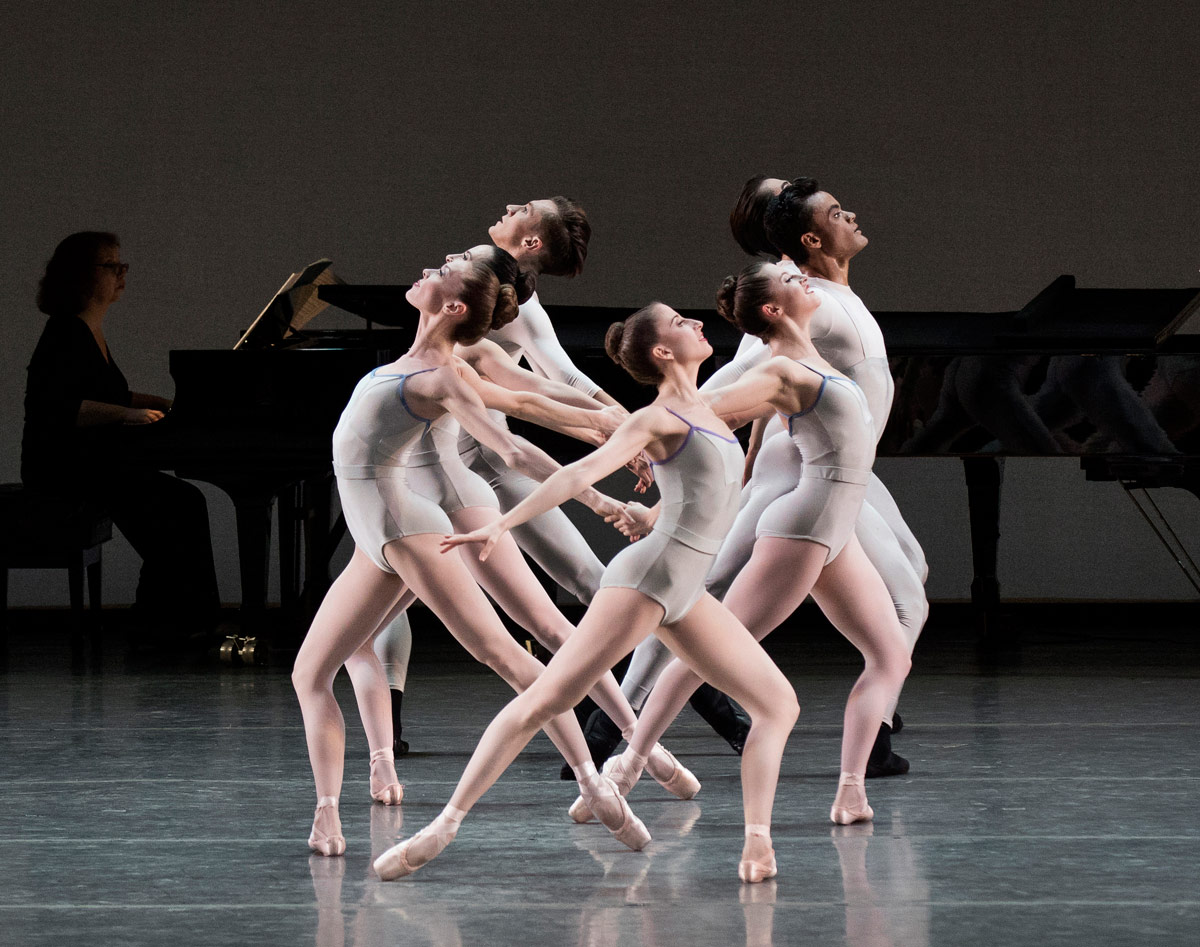
© Paul Kolnik. (Click image for larger version)
In Creases was the ballet that introduced the company to Peck’s choreographic imagination: the complicated co-ordination, the speed, the lines and circles and chains and blossoming flowers of movement. Though Peck’s skill is endless, this program shows little humanity or warmth, qualities he has hinted at in works like Rodeo, Four Dance Episodes and Paz de La Jolla. Perhaps he is naturally reserved, or perhaps he has yet to find the precise language to express such deeper emotions. Time will tell.













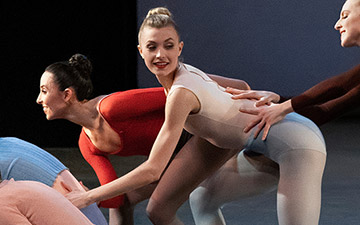

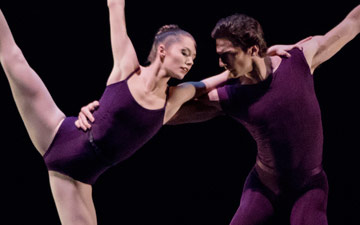
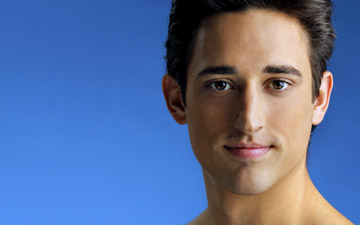
You must be logged in to post a comment.